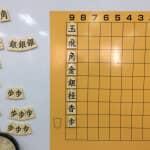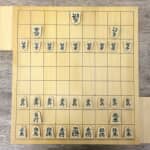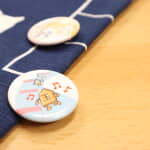9 February 2019
Things That Shogi Beginner Children Often Get Confused with: #4 Nifu (Doubled Fu)
Why Shogi Beginner Children Often Drop Fu as Nifu?
Japanese Shogi terminology “Kinjite” means prohibited moves. The most frequent prohibited move is “Nifu”, or doubled Fu. It can be said that the mistake you may find the most during a game played by two beginner children is also Nifu. When an unpromoted Fu is already on a file, the player can’t drop another Fu on the same file. This is the principle of Nifu. It’s quite simple, but Shogi beginner children quite often break the rule. Whey?
The other day, a five-year girl from a beginner’s class struggled with a problem below.
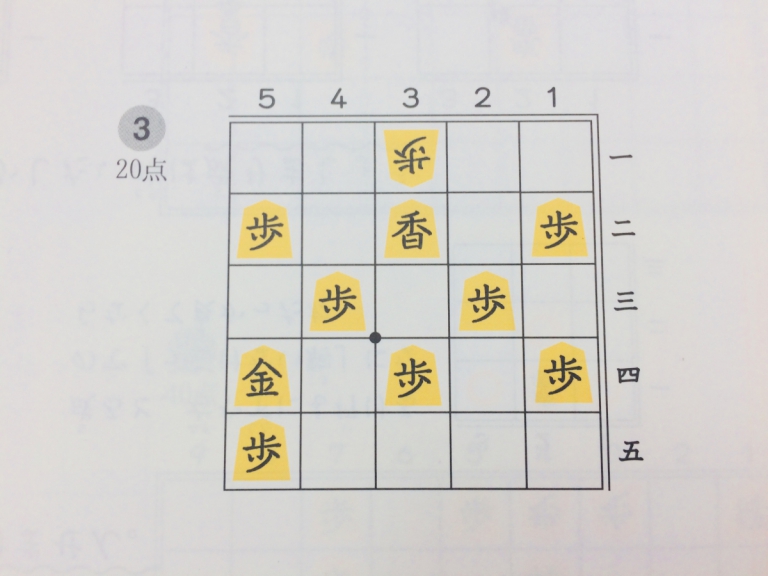
The above picture shows the problem requires children to find and circle Fu, which is making Nifu, among both you and your opponent’s pieces. The student overlooked Nifu made on the fifth file. Like this case, children find it more difficult to find Nifu when another piece is placed between two pieces of Fu.
Extra Attention Is Required When You Use Your Hand Piece
The case I introduced just before is the mistake which a child who was totally unfamiliar with Shogi made. As children continue to play, then they become more likely to make a mistake of Nifu when they use Fu from their hand pieces. In Shogi, there are many pieces of Fu and they are often captured or exchanged. You may have relatively many pieces of Fu on a piece board. Fu is more often used than other pieces and as a result Nifu is made frequently. Adding to that, there are several techniques involving Fu, such as “Sokofu” (Fu dropped onto the square on the bottom rank), “Tarefu” (Dropping Fu to a square where it can be promoted in the next move), and “Awase-no-fu” (Dropping Fu directly in front of an opponent’s Fu). When children use those techniques, they tend to make a mistake.
The other day, I taught Tarefu and asked children to let me know if they made Tarefu. Among reported cases, not a few were Nifu. This experience reminded me how easily children make Nifu. Sometimes, two beginner players continue to play and finish a game without noticing the existence of Nifu.
Why do you think this happens?
I suppose the reason is that Shogi boards are too wide for children to get a overview of it. Basically, beginner children are tend to get ahead of themselves, thinking how to get into the opponent’s camp and which piece should be promoted. Their focus is generally placed on the inside of an opponent’s camp or the situation in which something is happening. Actually, this approach is also very important, but as the result, children are likely to focus too much on their pieces which are within an opponent’s camp or can move effectively. Say, when children find Fu that they can move effectively, they move it without consideration of other possibilities. It seems challenging for children to take time and look at their own camps carefully before moving a piece.
In Shogi, you are required to get the overview of what is going on a board, rather than attention to the opponent’s camp or the situation in which a battle is occurring. Without such an overview, you tend to fail to notice the existence of attacking threats from a long distance. For example, Kaku can aim at the opponent’s pieces from a long distance, so called “Tomi no Kaku”. It’s also important that you can determine the balance of importance level. I mean, imagine, in one part of the situation you seem to be making a loss and in another you are protecting your Gyoku more firmly than your opponent. The ability to nail down the priority to take an action is also crucial.
Let’s get back to the subject. Beginner children hardly get the overview of a board.
Today’s Example
Mistakenly drop Fu as Nifu.
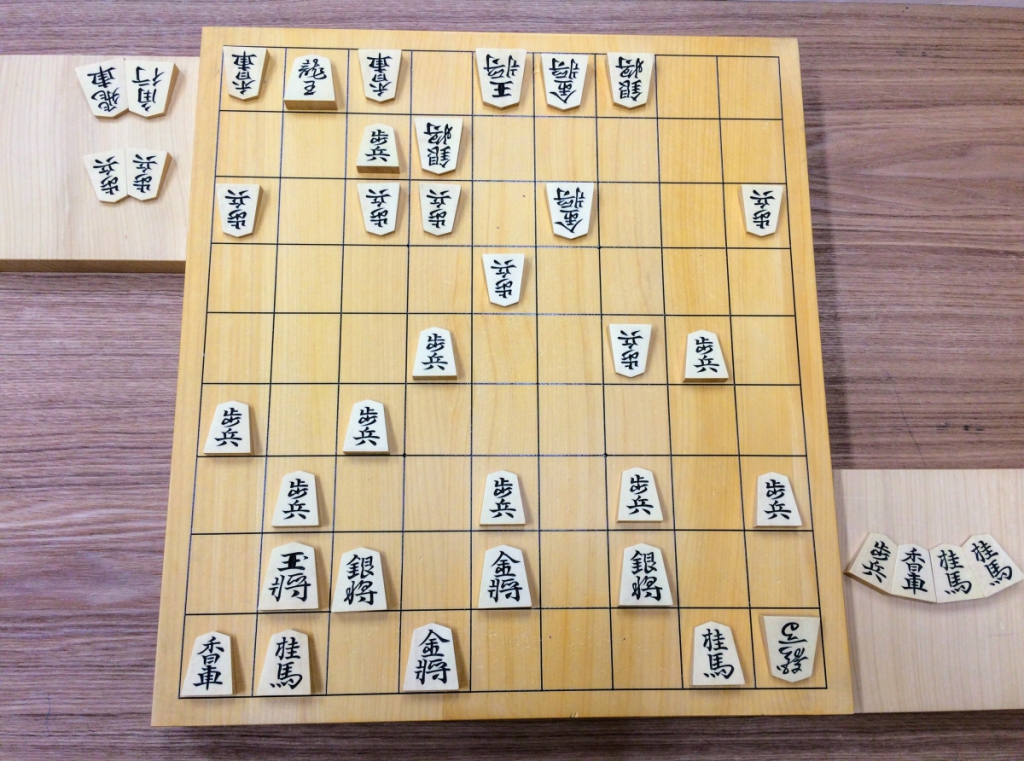
The above picture shows the situation during my class the other day. Fu has been just dropped on the square of “7 Two”. Apparently, this dropping is good move. The dropped Fu is aiming at the opponent’s Kyo. If it is captured, Ryu on “8 One” will capture the opponent’s Gyoku. You know, when you drop Fu effectively, it often results in Nifu. Actually, at the first glimpse of this situation, I said, “Oh, it’s a great Nifu!” The student who made this move is at the introductory level of my class, so this is a great progress.
But…, yes, there is another Fu on the same file, “7 Six”.
In Order Not to Drop Fu as Nifu
The best way not to make Nifu is to get yourselves into a habit of considering the situation carefully before moving a piece. It might sound too simple, but I would say there is no way better than this. I always teach Shogi beginner children to make sure if they don’t have another Fu on the same file when they drop Fu. I encourage them to say “When I drop Fu, be careful about Nifu!”
Moreover, as a practice of using techniques in which Fu will be used, such as “Tare Fu” (Dangling Fu), whenever children use any technique, they are instructed to report it to me. The aim of the instruction is not only to check if the technique was used correctly, but also to check if they didn’t make Nifu mistakenly.
Having many experiences to make Nifu could be also the possible way to reduce the chance to make Nifu, paradoxically though. When I pointed out the mistake, the above student who made Nifu looked a bit disappointed and said, “Oops! I made a mistake!” It must be a valuable experience in order to raise children’s attention to Nifu. They can be careful when they drop Fu next time.
When two players are both Shogi beginners, Nifu is often overlooked and the game continues. Meanwhile, when two players have a certain amount of experiences, the player who made Nifu loses a game immediately, or asks an opponent what he/she wants to do. Because some players want to continue the game instead of ending.
During a game played in the class with an instructor or another student, when Nifu is pointed out on the spot, children realize when they tend to drop Fu as Nifu. It is a great opportunity for children to know when they should be careful to drop Fu.
Reminding “When I drop Fu, be careful about Nifu!” is not only for preventing your mistakes, but also for your opponents’. In classes, you can be flexible to Nifu prohibitions. On the contrary, during Shogi tournaments, you need to notice the mistake and to point it out. There is no referee in a Shogi game. You may ask someone in charge to point it out, if you don’t/can’t do so. Anyhow, you have to notice the existence of Nifu.
I hope you develop abilities to pay attention how to drop Fu and not to overlook your opponent’s Nifu.
More importantly, please be noted that you should admit your defeat immediately when you drop Fu as Nifu.
Try to be a good loser!

